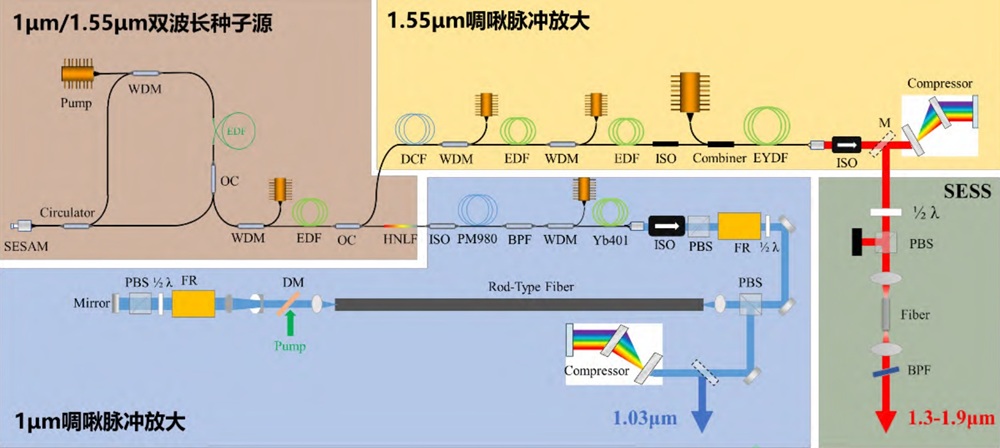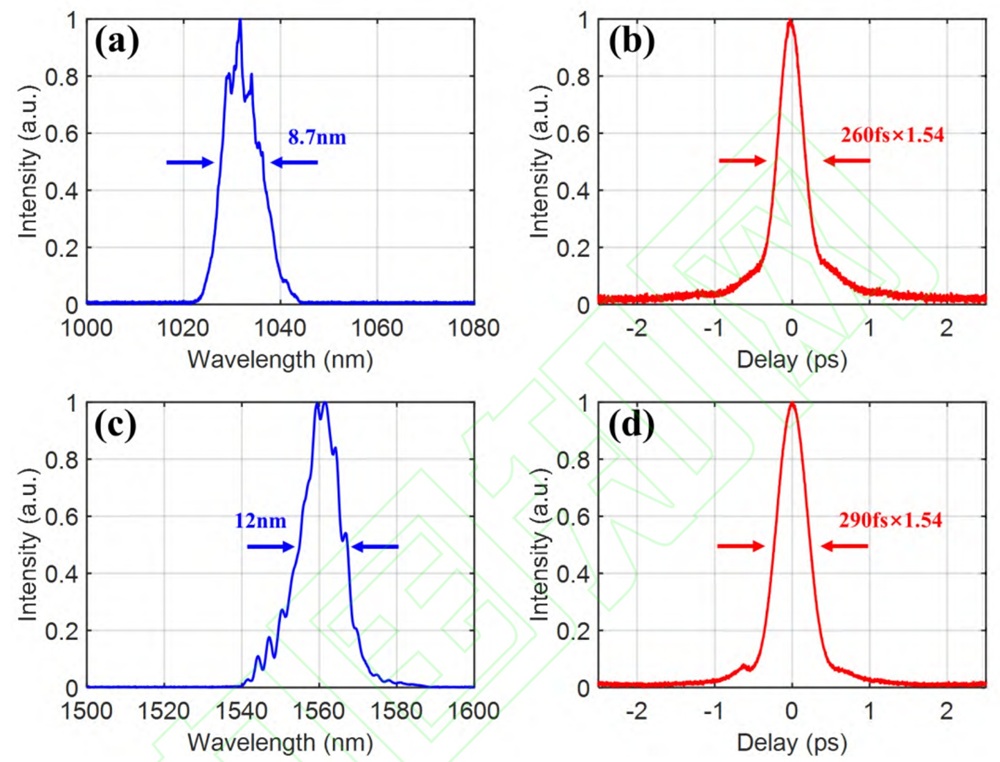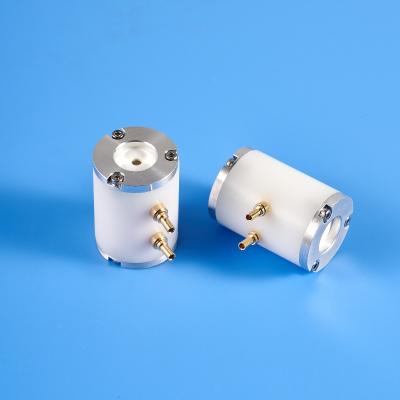High-Power Mid-Infrared Ultrafast Sources at 2 - 5μm Based on Dual-Wavelength Source - Part 5
3 Difference frequency generation of high-power mid-infrared ultrafast light sources
3.1 High-power tunable dual-wavelength ultrafast fiber laser

Fig.4. High power tunable dual-wavelength (1.55μm/1μm) ultrafine fiber laser experimental device diagram
Based on the difference frequency generation experimental scheme using PPLN crystal (www.wisoptic.com) shown in Figure 1, we constructed a high-power tunable dual-wavelength ultrafast fiber laser device (Figure 4). The two pulses originate from the same erbium-doped fiber laser seed source to avoid repetition frequency differences and ensure zero carrier-envelope phase shift after the difference frequency generation. The erbium-doped fiber laser seed source is based on a ring cavity structure and uses a semiconductor saturable absorber for mode locking. The laser operates in a dispersion-managed soliton mode-locked state, outputting ultrashort pulses with a central wavelength of 1556 nm and a spectral width of 22 nm. The pulses have a repetition rate of 33.3 MHz and an average power of 1.1 mW. After erbium-doped nonlinear amplification, the pulses are split into two paths by a fiber coupler. One path undergoes erbium-doped nonlinear amplification and fiber compression to increase the peak power, and the spectrum is broadened to 1.03 μm using a highly nonlinear fiber (HNLF). The principle of nonlinear spectral broadening is as follows: After a 1.55μm high-peak-power femtosecond pulse enters the optical fiber, it is affected by dispersion and various nonlinear effects (primarily self-phase modulation), causing the spectrum to broaden dramatically to 1.2-2.1μm. During the subsequent HNLF, the overall shape of the spectrum stabilizes, forming a resonant dispersive wave in the 1000-1200nm region. The short-wavelength portion of this dispersive wave (1000-1100nm) resonates and enhances due to phase matching. The long-wavelength portion of the dispersive wave (1100-1200nm) continues to attenuate during fiber transmission due to non-phase matching, ultimately forming a spectral peak at 1050nm. The pulse then undergoes fiber broadening, single-mode fiber pre-amplification, rod-type photonic crystal fiber double-pass main amplification, and grating pair compression, increasing its average power to 31.5W, corresponding to a pulse energy of 0.95μJ. The output pulse spectrum and autocorrelation curve are shown in Figure 5 (a, As shown in Figure 5(b), the spectrum has a central wavelength of 1030 nm and a full-width at half maximum of 8.7 nm. The pulse autocorrelation curve shown in Figure 5(b) lacks a distinct pedestal. Using a hyperbolic secant fit, the pulse full-width at half maximum is 260 fs, corresponding to a peak power of 3.65 MW.
Fig.5. The output spectra and pulse autocorrelation curves of ytterbium-doped and erbium-doped CPA




